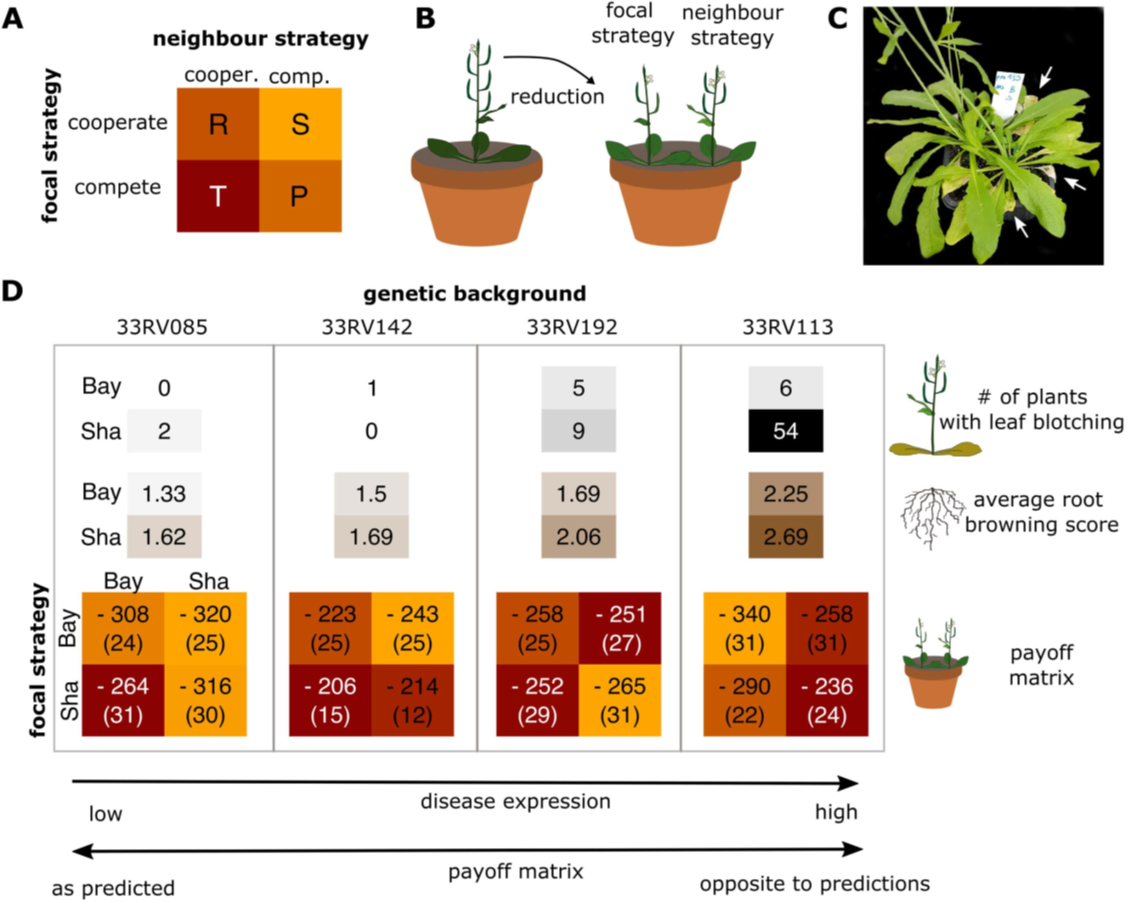文献信息
摘要信息
Historic yield advances in the major crops have, to a large extent, been achieved by selection for improved productivity of groups of plant individuals such as high-density stands. Research suggests that such improved group productivity depends on “cooperative” traits (e.g., erect leaves, short stems) that—while beneficial to the group—decrease individual fitness under competition. This poses a problem for some traditional breeding approaches, especially when selection occurs at the level of individuals, because “selfish” traits will be selected for and reduce yield in high-density monocultures. One approach, therefore, has been to select individuals based on ideotypes with traits expected to promote group productivity. However, this approach is limited to architectural and physiological traits whose effects on growth and competition are relatively easy to anticipate. Here, we developed a general and simple method for the discovery of alleles promoting cooperation in plant stands. Our method is based on the game-theoretical premise that alleles increasing cooperation benefit the monoculture group but are disadvantageous to the individual when facing noncooperative neighbors. Testing the approach using the model plant Arabidopsis thaliana, we found a major effect locus where the rarer allele was associated with increased cooperation and productivity in high-density stands. The allele likely affects a pleiotropic gene, since we find that it is also associated with reduced root competition but higher resistance against disease. Thus, even though cooperation is considered evolutionarily unstable except under special circumstances, conflicting selective forces acting on a pleiotropic gene might maintain latent genetic variation for cooperation in nature. Such variation, once identified in a crop, could rapidly be leveraged in modern breeding programs and provide efficient routes to increase yields.
摘要总结:
-
研究背景
传统观点认为个体最强的时候群体也会表现更好,换句话说就是单株产量更高的时候群体的产量也更高。但是有研究发现在一定程度后,群体的产量并不会一直线性增加(下图)。
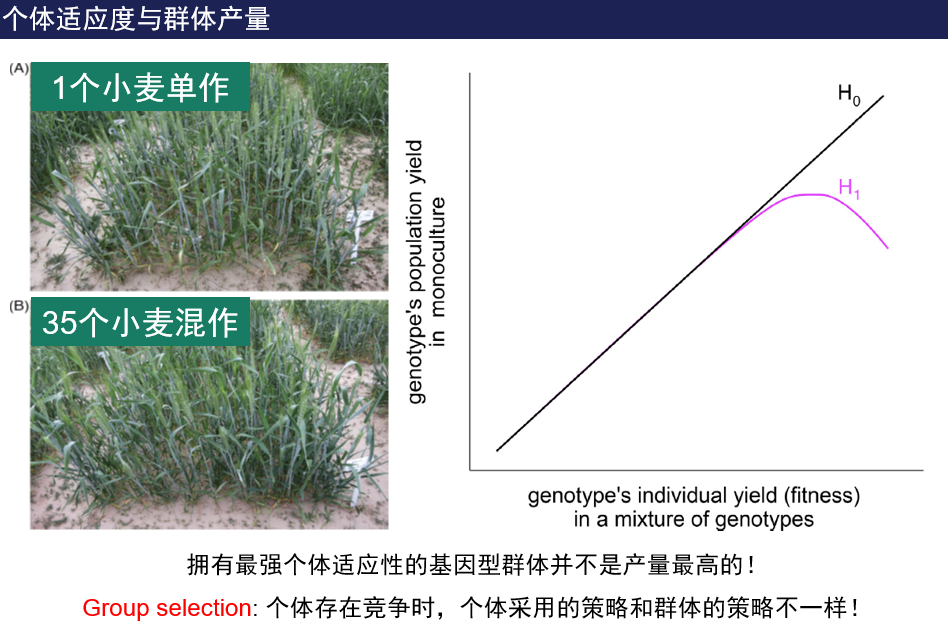
研究材料
所用的拟南芥来自RegMap这个群体,前期已经有这个群体的很多表型数据(方便后续验证)。
试验方案
98个材料作为Focal plant,另外的10个品种作为neighbor,同时98个品种分别单作作为对照,最后调查地上部分生物量和地下部分生物量。
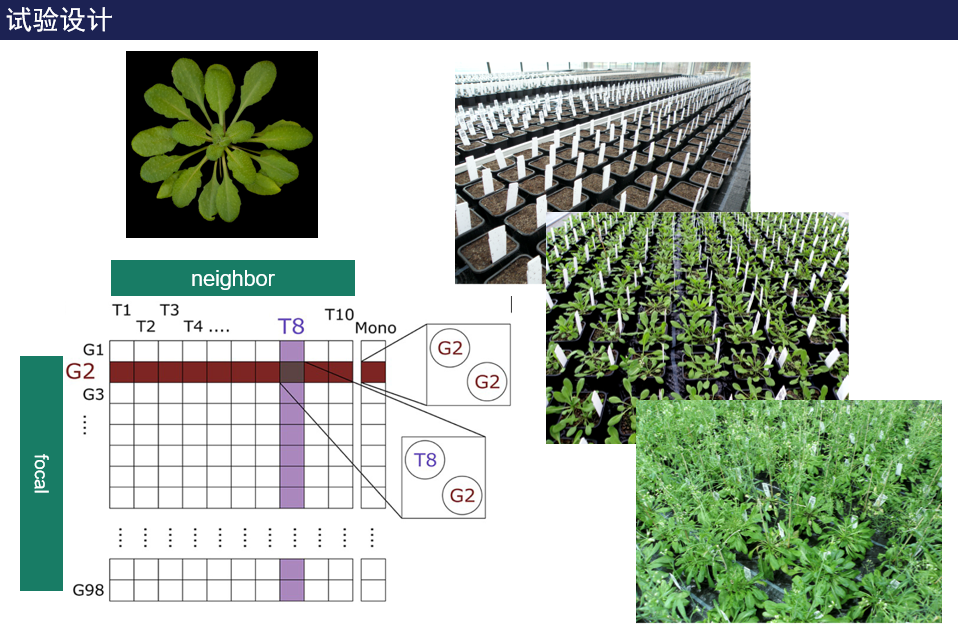
研究结果
个体适应度与群体产量
先前的研究发现个体适应度与群体产量基本是二次关系,于是呢作者也使用类似的方法对该实验中的个体适应度和群体产量进行建模分析(下图)。基本上可以看出个体适应度与群体产量呈现出显著的正相关关系。有一部分个体在互作条件下产量较低,但是呢在单作条件下产量较高。进一步计算了群体-个体均衡(Group-verse-individual trade-off,G-I trade-off),发现有一部分品种都有显著的G-I trade-off.
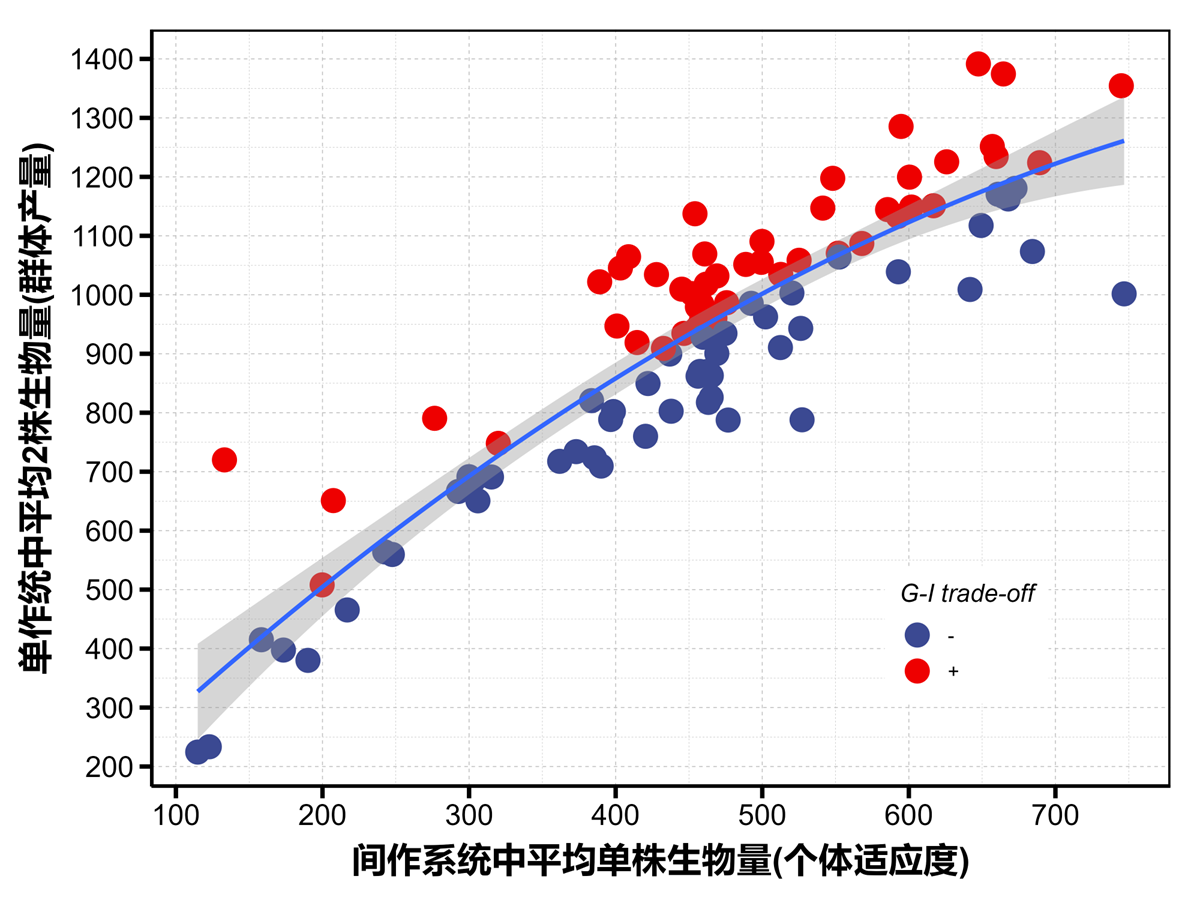
GWAS挖掘遗传位点
在G-I trade-off的基础上,进一步利用GWAS挖掘控制G-I trade-off的遗传位点。在三号染色体上成功发现显著的SNP位点1529455.有意思的是用院原始值做GWAS时并没有鉴定到任何显著的位点。对这个SP位点的等位基因进行分析发现具有正向G-I trade-off的品种基本上都是携带C这个等位基因的。
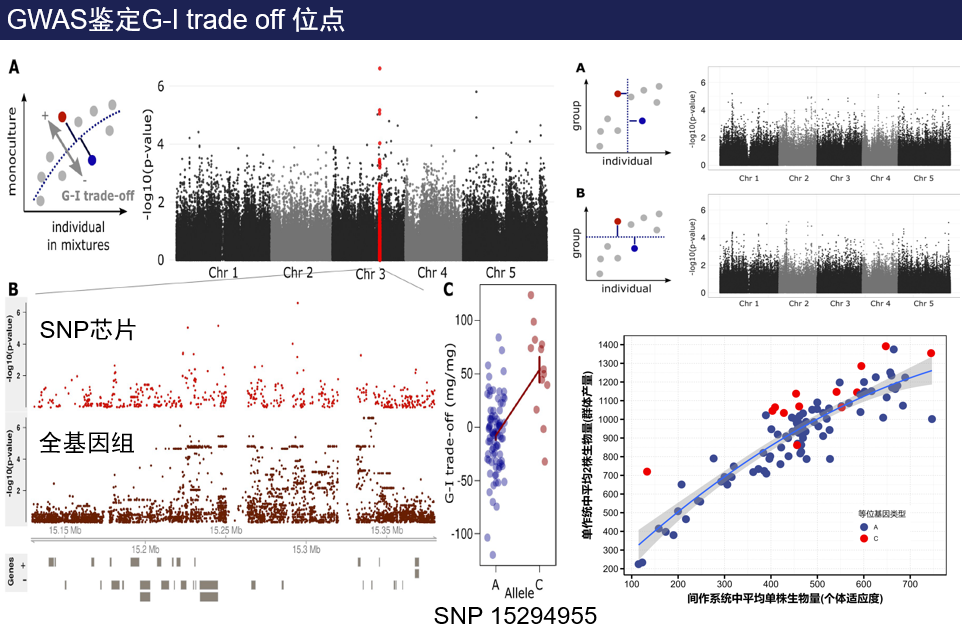
携带C等位基因的品种产量更高
既然等位基因C是对群体有益的,那么在高密度种植时,是否会提高群体的产量呢?于是就将携带不同的等位基因的品种以不同的密度进行种植,发现携带等位基因C的材料在高密度种植时具有更高的群体产量。虽然C等位基因群体的个体适应度差一点点,但是群体的产量显著增加15%.
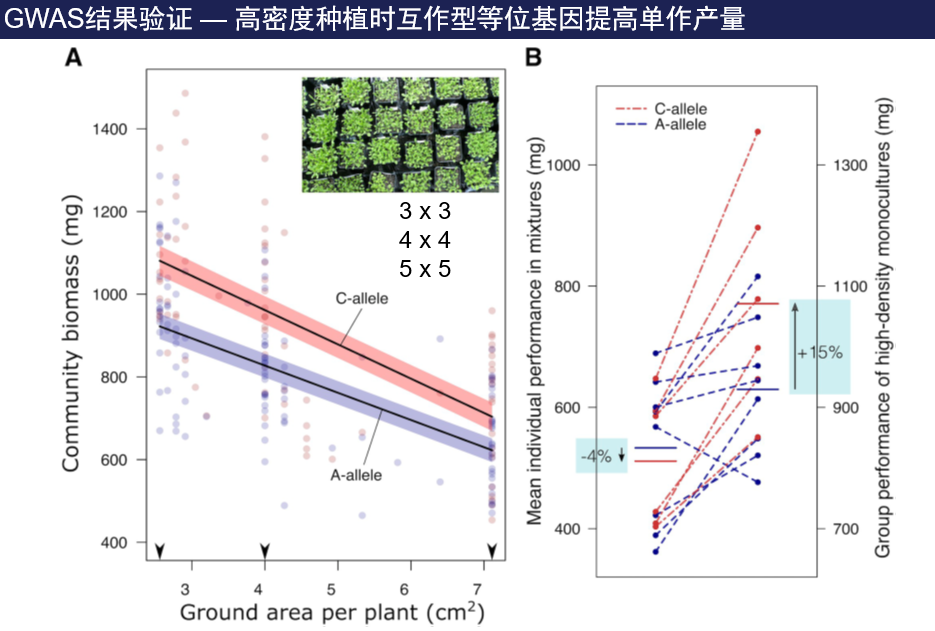
“互助”的机制
既然这种效应确实存在而且受遗传调控,那背后的机制是什么呢?进一步的研究发现“互助”提高群体产量的机制在于调控根系分布,改变根冠比。
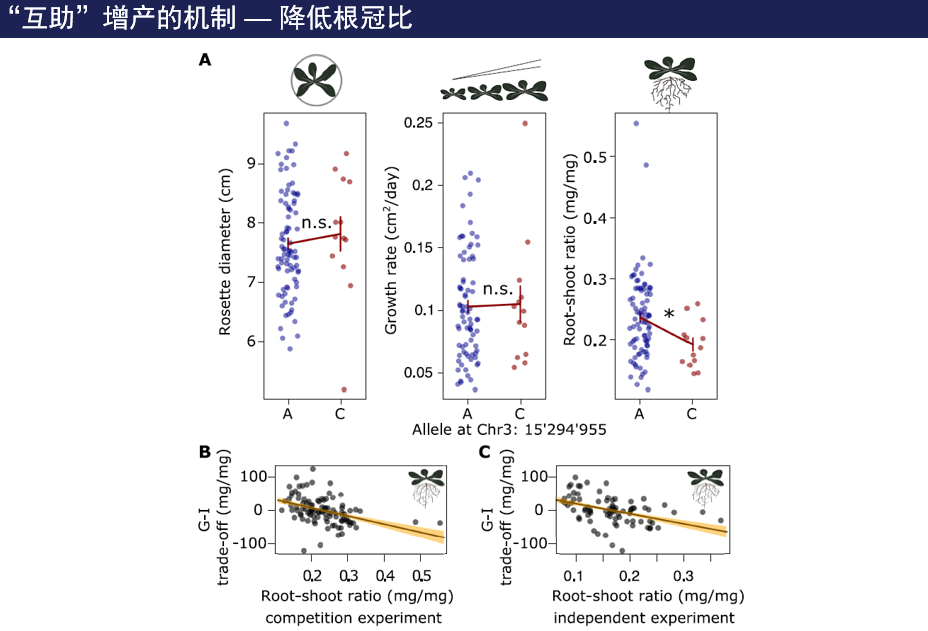
“互助”位点与抗病性相关
植物在进化过程总倾向于选择能够互助的个体,那这个遗传位点在群体中的分布如何呢?分析结果发现该位点在地理分布上较为广泛,而且基因组数据表明该等位基因的MAF在18%左右,也就是接近20%的个体都含有这个关键位点。另外一个很有意思的点在于在该SNP的连锁区域中,发现一个和拟南芥抗性显著相关的基因AtMIN7,这个基因是拟南芥抗灰霉菌的关键基因。既然这样,那么携带不同等位基因的拟南芥是否抗性存在差异呢?结果发现确实是存在显著差异的,抗病的品种具有更高的G-I trade-off.
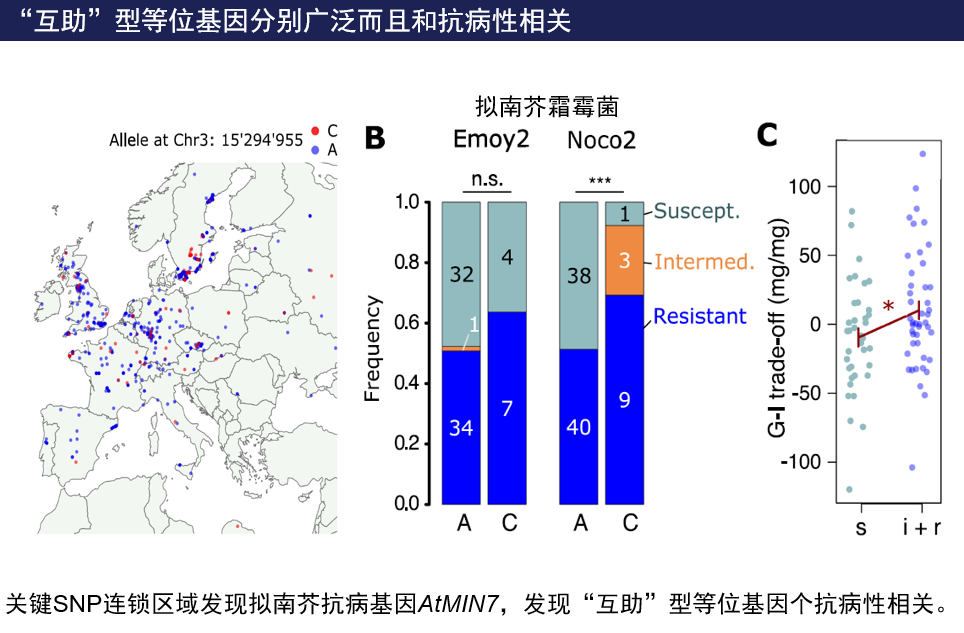
“互助”基因型的“囚徒困境”
本研究一个很有意思的点在于将纳什均衡中的“囚徒困境”应用到生物学中。作者猜想具有“互助‘等位基因的品种在面对更具有竞争性的品种时,会”吃亏“,也就相当于”囚徒困境“中的一个人抗住了拷问,但是另外一个人直接坦白从宽了,那这个抗住拷问的人其实是吃亏的。这个实验中作者使用了4组近等基因系来探究这种关系,Sha品种更具有竞争性,Bay品种更具有合作精神。从图中可以看出当病害发生严重时,Bay品种在面对Sha这个品种的时候生物量降低更少,也就是说当面的高度的病害胁迫压力时,携带“互助”型等位基因的品种具有更好的竞争优势。
